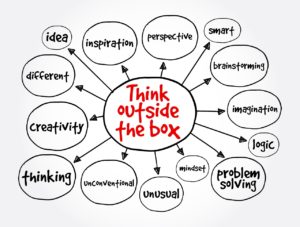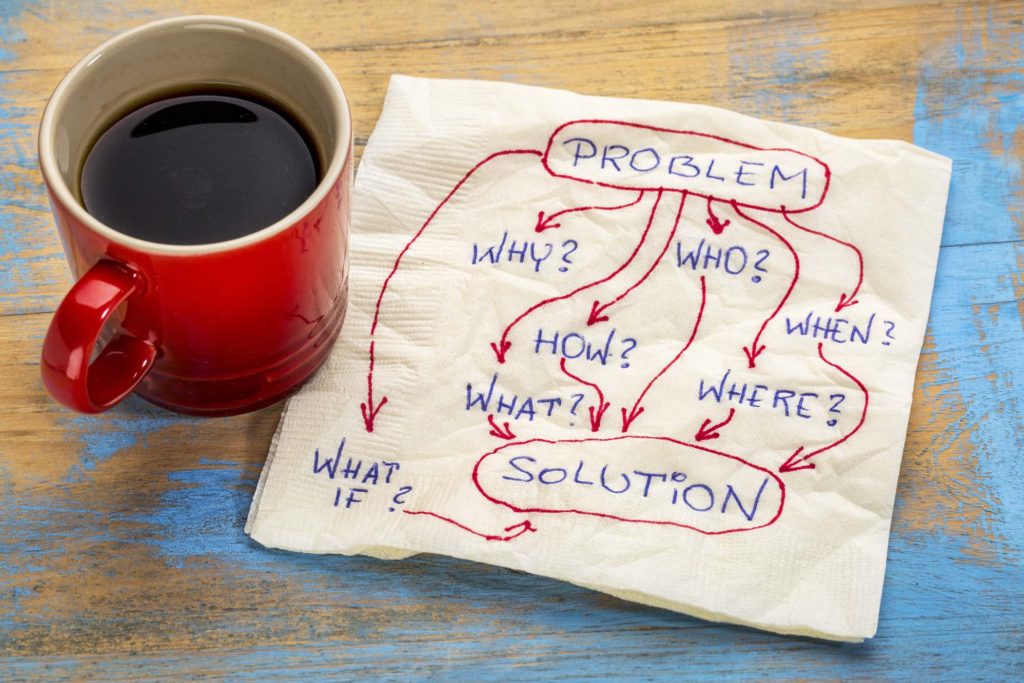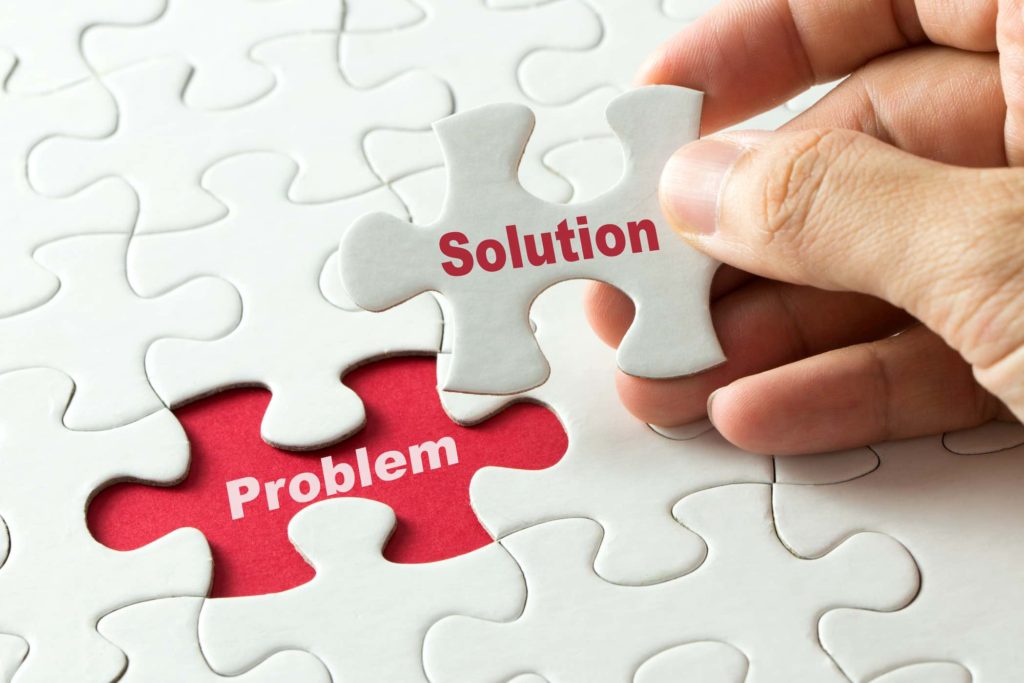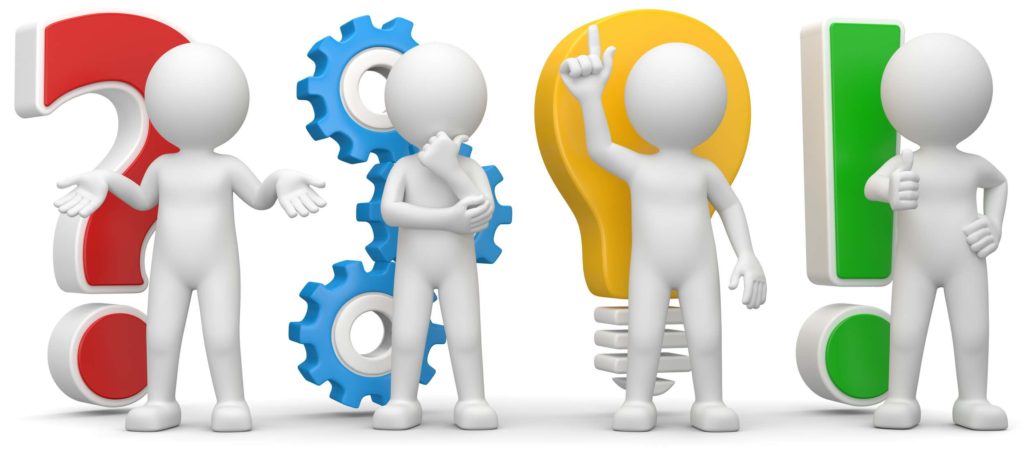What’s the worst nightmare for a product manager? When he/she is working on creating a solution…and this realization strikes like lightning: “Wait a minute…what problem am I actually solving? … How can I be sure I actually solve the right problem?”
Or when someone asks this question in a meeting — and it puts everything on hold.
You see, solving problems is innate to product managers. It’s what helps the team, department, product, and company as a whole succeed when product professionals like product managers solve problems that matter. But, the secret that makes a product manager great, is identifying and solving the right problems first.
(We’ll get to that shortly later in the post)
First, let’s have a look at the 5 powerful benefits you’ll gain by leveling up your knowledge — and learning how to think outside the box to solve the right problem!

1. You’ll make your workflow smoother.
Obstacles can hinder your workflow. When you solve the right problem, you overcome the right obstacle at the right time, you can keep your projects running smoothly. More often than not, you’re tackling a bunch of complex problems at the same time. By learning how to solve those sudden, unexpected problems that matter the most first, you can pave the way to a smoother workflow.
2. You’ll become a better team leader.
When you solve the right problem, you become a better problem solver, better team leader. You’ll be able to keep your team cohesive and connected. Since you’re the first respondent to every new problem — your attitude to how you approach that problem matters the most. If you do that job the right way, your team will stay worry-free, and will be confident enough to put their trust in you. Resultantly, you’ll position yourself as a credible, trustworthy leader who knows how to go about incredibly complex problems, at any given time.
3. You’ll finish more work in less time.
When you solve the right problem you save time. One single problem — even as mundane as renewing a software subscription — can put a ‘full stop’ to your work progress. Everyone just stops. All that time goes wasted, unproductive, or extremely less productive at the very least. But when you know what problems to prioritize first, how to identify them proactively, and then solve them before they hurt your productivity too much — that exact thing will help you do more in less time.
4. You’ll be delivering on-time projects.
On-time projects boost clients’ satisfaction, your department’s success, and your company’s success. But that’s only possible when you’re fast, efficient, and instinctive to solving the right problems, at the right time.
5. Happy clients/customers, happy You.
This is the most important benefit. At the end of the day, all that matters is how happy and satisfied your heart is by your work progress. As a product manager, you’re always at the forefront of every new obstacle. At times, it can even leave you overwhelmed on how to understand exactly what problems you’re facing — let alone how to solve those particular problems. When you master your problem-solving skills, you become confident, competent, satisfied, and a profitable team player for the company.
It’s Time.
Which problems should you solve first? The important ones, of course.
But how do you know which one is the most important one? Learn how to solve the right problem!
Instead of rushing, I want you to pause for a second.
Breathe.
What happens mostly is that managers rush into problems. The science behind why that happens is because we’re trained so instinctively.
Think about your school days. Your questions were well-framed and well-stated, all you needed were to figure out solutions/answers.Think about your childhood.
Your parents made it very clear about the things you’re doing wrong – and even guided you how to fix them.
Think about your mentor. They paved the way by making you well-aware of the hidden problems that were sabotaging your success.
The same pattern is continued by most managers in their professional life as well.
They just rush instinctively, without creating better problem statements first…
Without actually stopping and figuring out the root cause of the problem.
They jump into ‘solution space’ too quickly, instead of spending enough time exploring the ‘problem space.’
If you’re also a victim of that…stop.
Because when you’re in business, problems and obstacles can be complex.
Often extremely nerve-racking, coming from all different root causes.
That leads to unsolved clusters of problems — or worse, working on wrong problems at the wrong time.
Before anything, simplify what the problem actually is — and whether it’s the right one to focus on first.
What you should do instead is to…pause…wear your detective hat…look at everything with a fish-eye lens…
And craft better problem statements.
Get a hold of yourself — and see the problem as a whole using my Power Perspective method.
This is a brand new course I created to help product managers, entrepreneurs, or business professionals.
This course will teach you a compact, systematic approach to craft better problem statements using the unique power of perspective — so you can solve your best problems.
You’ll be able to create solutions that are effective and thorough.
Learn More about this course right here.















